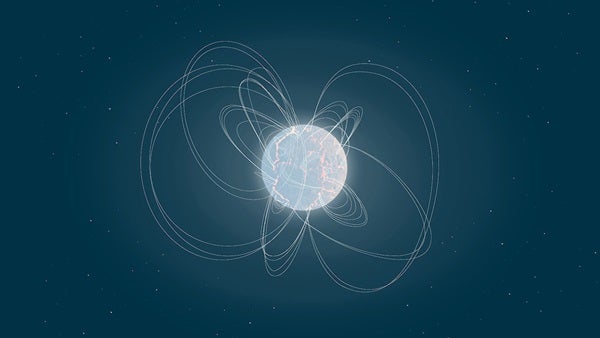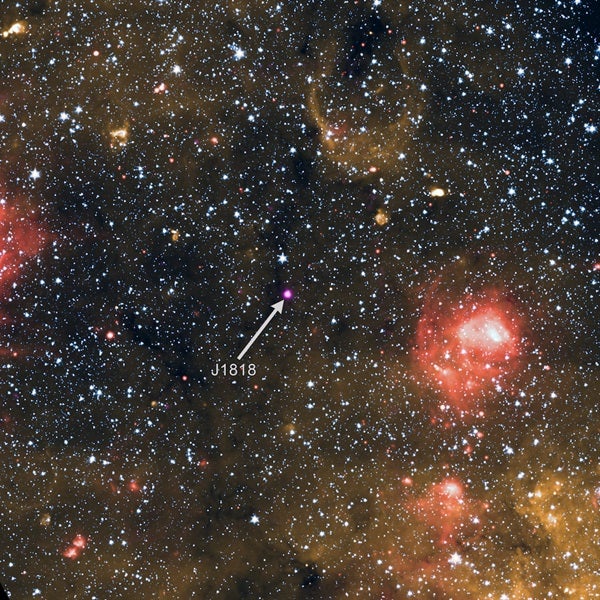Magnetars are a special breed of already strange neutron stars. Remnants of supernovae, neutron stars are incredibly dense objects — second only to black holes — that compress more than a Sun’s worth of mass into a sphere only about as wide as a city. Magnetars, however, are a subset of neutron stars that sport the universe’s most powerful magnetic fields. The fields around these stars are roughly a million billion times stronger than the magnetic fields of Earth.
However, despite their extreme nature, astronomers have identified only 31 magnetars out of the 3,000 or so known neutron stars. So, after the discovery of J1818.0-1607 by Swift last year, researchers further observed the new object with NASA’s Chandra X-ray Observatory. They found that the 31st known magnetar is even more special than they previously thought. Their findings were published November 26 in The Astrophysics Journal Letters.
Extraordinary magnetar
With follow up observations, astronomers were able to determine that, J1818.0-1607 is located about 21,000 light-years from Earth and is the youngest known magnetar; at a mere 500 years old.
“This object is showing us an earlier time in a magnetar’s life than we’ve ever seen before, very shortly after its formation,” said principle investigator Nanda Rea in a press release when the object was first discovered. “If we understand the formation story of these objects, we’ll understand why there is such a huge difference between the number of magnetars we’ve found and the total number of known neutron stars.”
But its young age isn’t the only unique aspect of J1818.0-1607: The star is also the fastest spinning magnetar, whirling around once every 1.4 seconds. And the researchers say the magnetar’s rotation rate is slowing as it ages, meaning it likely started out spinning even faster.
And if J1818.0-1607 wasn’t already exotic enough, it also joins a group of only five known magnetars that act like pulsars — which are fast-spinning neutron stars that emit powerful beams of radiation from their poles.
“What’s amazing about [magnetars] is they’re quite diverse as a population,” said Victoria Kaspi, director of the McGill Space Institute at McGill University in Montreal, in the release. “Each time you find one, it’s telling you a different story. They’re very strange and very rare, and I don’t think we’ve seen the full range of possibilities.”











